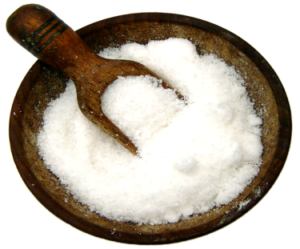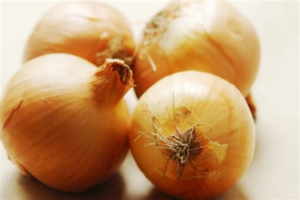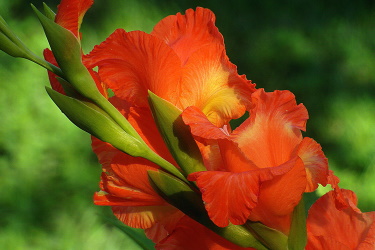
Table of Contents
GLADIOLUS PLANT PROFILE:


Gladiolus-– in the world of ornamental plants and flowers–is the trademark of elegance and beauty. Its close resemblance to lilies and its floral charm, with a wide range of exotic and vibrant colors, make it a ruling aesthetic among the gardeners as well as home florists.
If you need to make your indoor place a scenic sight, put some gladiolus in a vase alongside the window and wait for the place to lit up like a rainbow. The stunning colors of the blooms that are most adored by people are burgundy-red, greenish-yellow, strawberry-red, and orange. However, you can also find white, pink, purple, yellow, and double shaded blossoms too.
Gladiolus origin and specifications:
Gladiolus, also known as “sword lily” is a perennial flowering plant. It belongs to the botanical plant family “Iridaceae” and it is believed to be native to Asia, South Africa, and Mediterranean regions. Gladiolus is a comparatively large family with around 300 genera and 300 species. The plants are medium to high shrubs with hard and woody stems that can grow from 3 to 8 feet in height depending on the variety of the plant.
What is the cultivation process of gladiolus?
The cultivation of gladiolus is a systematic process, consisting of various steps that should be taken and various factors that should be considered to ensure a better yield of the plants. The cultivation process is as follows.
Propagation:
Gladiolus propagation or cultivation is carried out by taking the fresh corms that are collected from the healthy plants after about six to eight weeks of the flowering season. Once the bulbs or corms are collected, they are subjected to drying for a while to remove any moisture. The corms after drying can be sown in two types of soils, clay soil or sandy soil. And it can be cultivated in either a planting bed or ridge-tills. Prepare your planting site by loosening the soil with the help of a scraper or a rake.
Planting:
When your planting site is ready, place the corms as deep as around 4 to 5 inches with the sharp end facing upward. Make sure to provide a good 6 to 8-inch gap between your corms to avoid overcrowding of the plants. Cover the corms with the soil and add a thick layer of organic compost or manure to the soil. Now water regularly and wait for about 2 months to see your corms grow and produce branches and flowers.
Caring:
After planting, proper care of the plant is needed. The soil should be well-draining and weed-free, and for this purpose, mulch is the best thing to use. Mulch locks the moisture and keeps the soil moist throughout the day. In the case of low temperatures, add straw or hay to avoid temperature fluctuations.
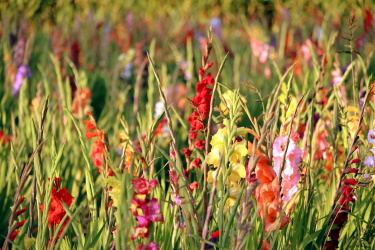

Harvesting:
As soon as you see your gladiolus standing tall in the field, it’s time to harvest your flowers (if you want some for bouquets). The preferred time for harvesting the flower is night or early morning. Take a container or bucket full of lukewarm water while harvesting the flowers. By using a sharp knife, cut the stalks with buds; don’t go for fully opened flowers. The buds will open up when you keep them in the vase. Place these flowers in a dark and cool place to set.
Storing:
Storing is done when you plan on reusing your corms for the next harvest. Taking the corms out should be done very carefully, or else the corms can get destroyed. Remove the soil with the help of a rake or spade and pull the plant out. Use a gentle hand to minimize any damage to the corms.
Remove the soil form the corms and place them in a sheet or tray and allow it to soak a good amount of sunlight for 2 to 3 days. Once the corms are treated in the sunlight, put them carefully in a paper bag or a cloth bag at a low temperature around 2-7°C, and you can use them again anytime to get a new harvest of your gladiolus.
Certain factors and conditions that are necessary for gladiolus cultivation are:
Soil:
Any regular garden soil can opt for gladiolus cultivation, but it should be well-draining, and the PH should be slightly acidic to neutral i.e., 6-7.
Fertilizer:
Any fertilizer that is rich in potassium, phosphorus, and nitrogen can be used. These elements are essential for gladiolus development, and in the presence of these elements, the flowers bloom really well.
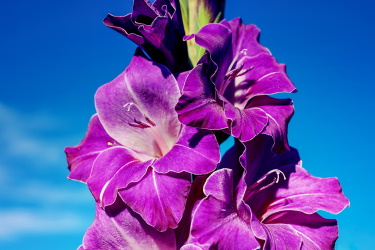

De-spiking:
Spikes should be removed from the stems frequently. Spikes require energy and food to sustain, and removing them will make this energy diverted towards the flowers. So spike removal helps in better flower yields.
A quick tip for gladiolus cultivators: Don’t forget to spray your corms with fungicides to avoid weed or fungal growth.
How to plant gladiolus in pots?
Being the most beautiful and ornamental flowering plant, gladiolus is vastly used by the homemakers and gardeners as an indoor plant. Planting gladiolus in pots is awfully easy, you just need three or four things, and your gladiolus is all set to enhance the beauty of your house. A pot, some potting soil, and a stake will do the potting.
Take a pot that is around 16-20 inches deep and fill it with well-draining potting soil. Now place the corms at a depth of 6 inches, and the pointed end of the corms should be facing up. Cover the corms with soil and water the corms moderately. If you have placed two or three corms in a single pot, you have to place a stake for the tall plants to get the support they need. You can also use a tomato cage for support.
Points to remember for gladiolus bulb care?
The bulbs should be taken care of in two ways; when the plants are too old or when the winter season is approaching. The bulbs are strong enough to withstand any climate change, but it is preferable to remove the bulbs when they are too old, or else they will start producing baby bulbs instead of flowers. And in the case of winter, if the temperature gets to freezing points, the bulbs can die, so it is recommended to remove and store them for the next season. Bulb care can be done in the following ways:
Add a good organic compost
Provide enough sunlight
Provide proper spacing.
Remove air pockets
Water adequately
Use stake for taller varieties.
Mulch when the plants are little grown
Add bulb fertilizer
In the case of winter, you can simply remove the corms by digging the soil with a spade and pulling the plant out with the stem. Afterward, remove the soil from the bulbs and sundry them, in a tray, for 3 to 4 days. Once the corms are dry, place them in a mesh bag to allow proper ventilation. Place this bag in a cool, dry place and wait for the season to change. You can replant these corms in the spring for a new harvest of your gladiolus.
How to grow gladiolus throughout the season?
The vibrancy and vividness of gladiolus flowers make it the most demanded and adored plant as an ornament. And since it is as prevailing as a decorative plant, people tend to grow gladiolus throughout the year. The best way to grow gladiolus throughout the season is to remove and store the corms in favorable conditions.
Taking care of the corms is the key; the better your corms are, the better your flowers will be. So remove your corms in/before winter and wait for the next season. As the spring season starts to approach, plant the corms again, and you can enough your gladiolus anytime or any season.
How to provide your gladiolus plant with the end of season care?
By the end of the flowering season, your gladiolus grows at its peak with all its youth and maturity. Spikes and faded flowers are one of the things that can be found in abundance at this time. So you should take care of that. The end of season care can be done by pinching and pruning the plants.
The faded, withered and wilted flowers and leaves should be removed or pinched with the help of the hands or by any suitable garden tool. Pinching helps in opening of closed buds and promote new flower growth. Similarly, for pruning, you can remove the whole flower or branch that seems wilted or dead. You can also trim the gladiolus by cutting the whole stem above the ground.
Some facts that may amaze you about gladiolus:
Gladiolus is also called the flower of August.
Gladiolus flowers are mainly associated with wedding anniversaries.
Many characters are named after the plant-like gladion in Pokemon and that of fantasy XV character.
Gladiolus is termed as “gladdies” by Dame Edna Everage, an Australian comedian, and she uses them as her signature flowers.

